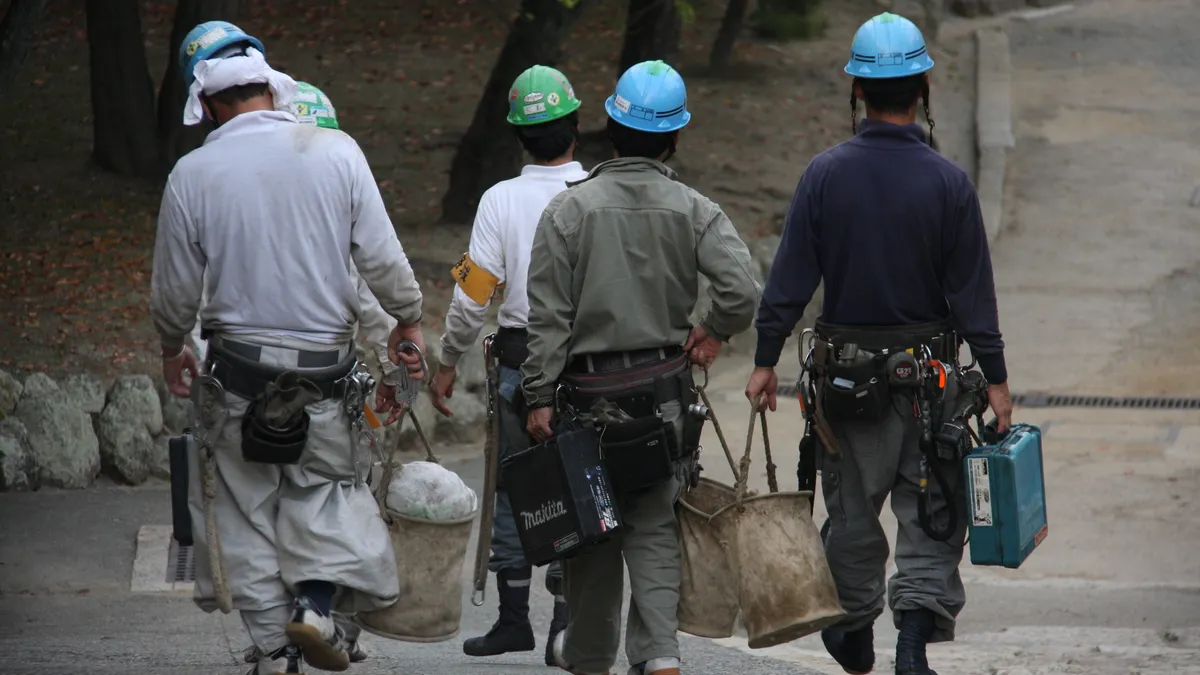This story is part of Construction Dive's ongoing 'Roadblocks to Recovery' series of articles looking at the COVID-19 pandemic's effect on the construction industry and how an expected rebound in construction work later this year could be slowed by a variety of forces. Click here for other articles in the series and check back for more throughout the year.
Dive Brief:
- Despite massive coronavirus-induced layoffs over the past 12 months, construction employees are becoming harder to find and more expensive, a new report found.
- The industry is beginning to experience labor shortages as it bounces back from last year's pandemic-related downturn, according to the 2020 Marcum JOLTS Analysis of construction data from the U.S. Bureau of Labor Statistics’ Job Openings and Turnover Survey. Job openings fell to 195,000 in December, equal to roughly 2.6% of available construction positions.
- In addition, as contractors in some regions struggle to find labor, wages have risen to record levels. In January 2021, average hourly earnings of construction employees reached their highest level ever, $32.11, and average weekly hours worked rose to their highest level since 2019’s third quarter. “This is what might be expected from a strong economy operating under normal circumstances, not one facing a lingering pandemic and elevated unemployment,” wrote Anirban Basu, author of the report and Marcum’s chief construction economist.
Dive Insight:
When the coronavirus pandemic slammed the U.S. last March, contractors slashed their workforces as projects slowed or stopped. More than 600,000 construction workers were laid off or discharged in the month, more than 50% above the level registered during the previous worst month on record of April 2009. April 2020 was even worse, with 709,000 workers or 10.8% of the total construction workforce laid off or discharged.
Now that most construction projects are back across the country, contractors are seeing the industry’s persistent labor shortages return. Late last year, layoff activity declined and in December, 13,000 more construction employees across the country quit their jobs than were laid off or fired, another indication of labor market tightness.
“When the pandemic began, some thought (and hoped) that the massive job losses observed in March and April would mitigate the skilled labor shortages that have frustrated construction firms for years,” wrote Basu. “That simply hasn’t happened to any meaningful degree.”
The report warns that, historically, some workers who lose or leave their jobs during a recession don’t return to the industry.
“According to the Census Bureau, more than 60% of construction workers who lost their jobs during the Great Recession left the industry permanently by 2013,” the report says. “Many of these workers found positions in other industries, while others retired altogether."














